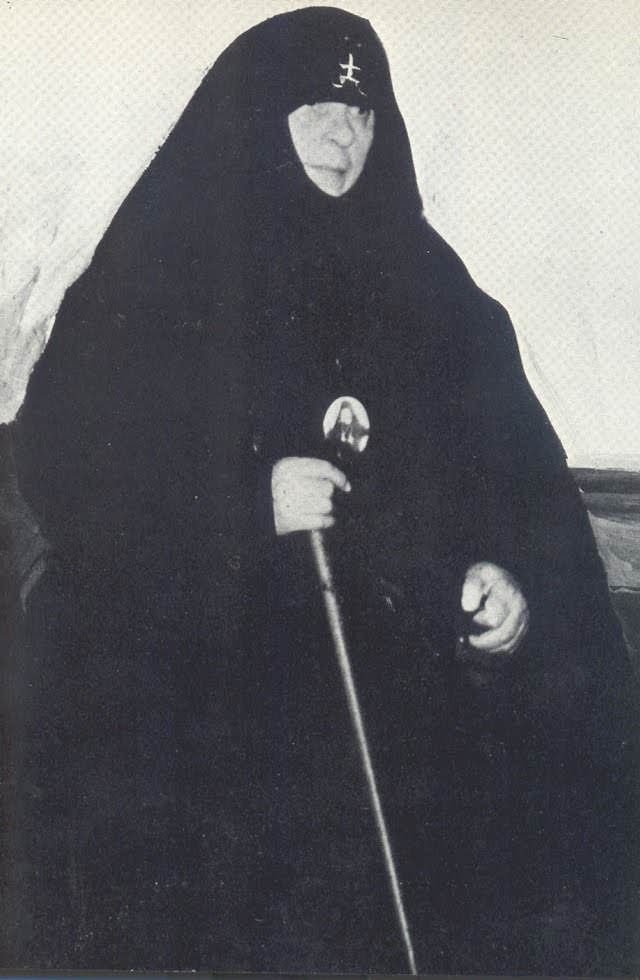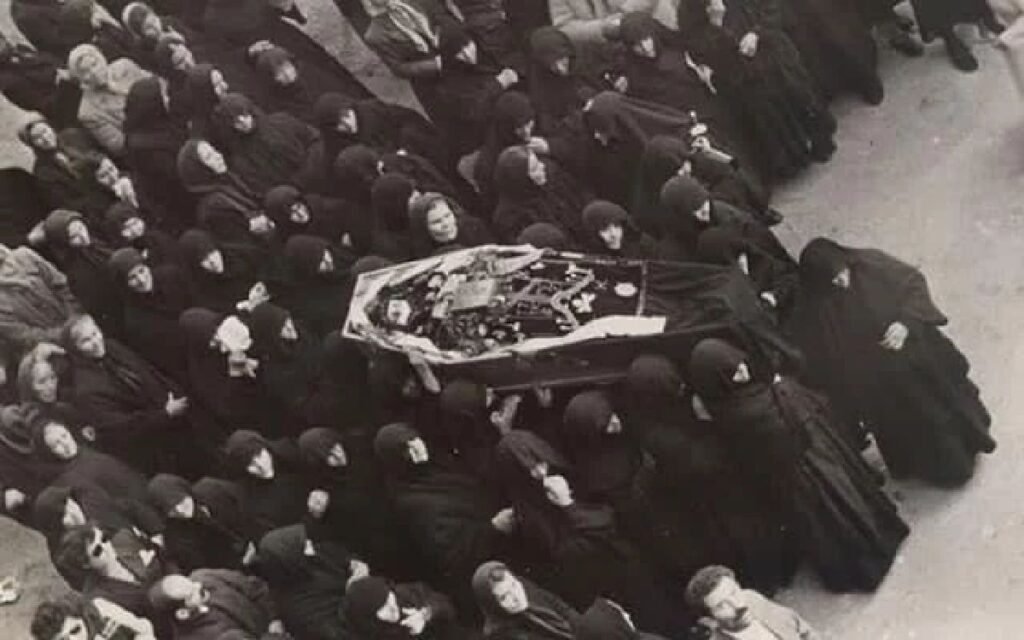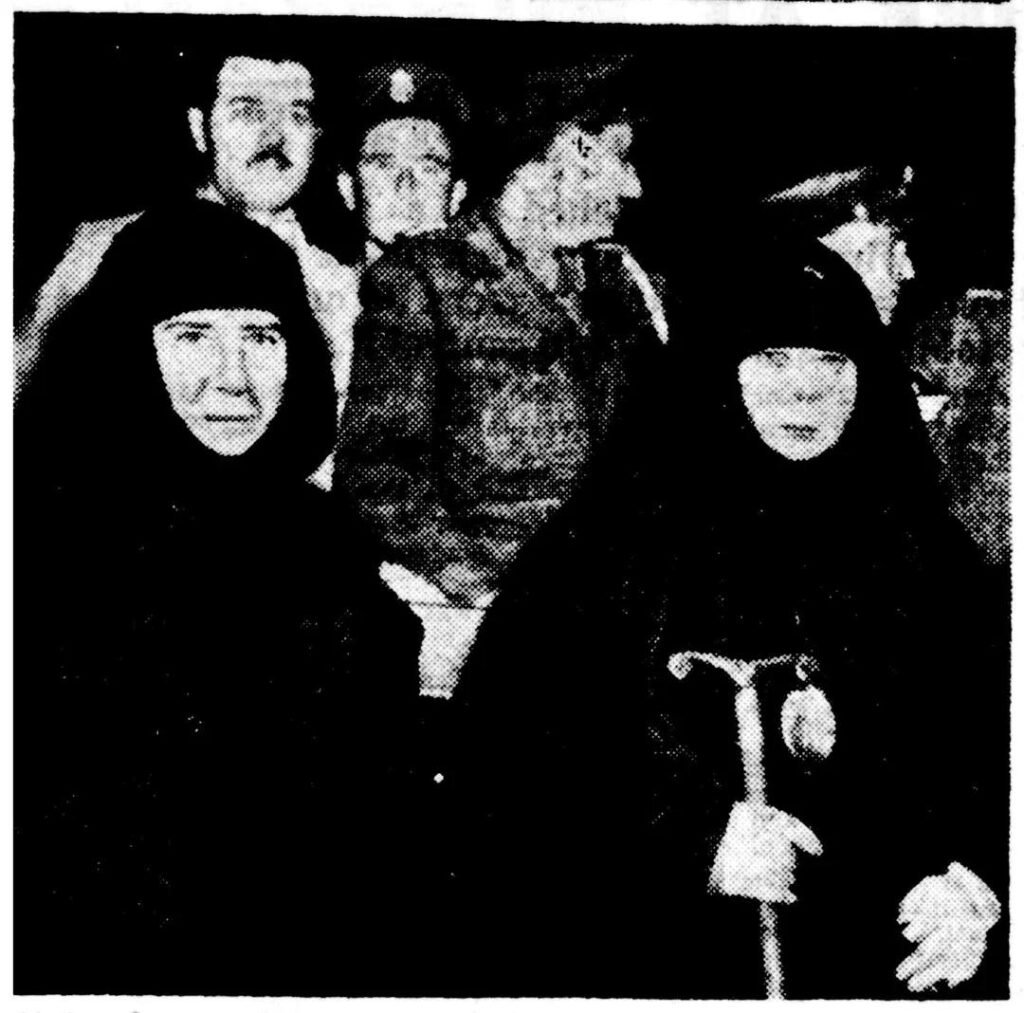On a misty hillside south of Athens, Greece, a monastery still stands—a silent witness to the sinister deeds of one of history’s most elusive and ruthless killers. Mariam Soulakiotis, known infamously as “Mother Rasputin,” cloaked herself in the robes of a nun but wielded power with the malevolence of a tyrant. Beneath her holy veil, she ran a fortress of horror, where faith was twisted into a weapon, and charity masked unimaginable cruelty. Her story is a chilling reminder of how evil can lurk in the guise of sanctity.
A Monastery of Deception

In the late 1920s, Mariam Soulakiotis, alongside her spiritual mentor Bishop Matthew, founded the Pefkovounogiatrissa Monastery, nestled in the hills near Corinth. Officially, the monastery was a sanctuary for Old Calendarists, a fringe sect of the Greek Orthodox Church resisting the modernized Gregorian calendar. But for Mariam, it was far more than a religious haven—it was the perfect stage for manipulation, exploitation, and murder.
Mariam advertised the monastery as a free treatment center for tuberculosis patients, drawing desperate souls who sought healing at its high-altitude location. Yet, behind the monastery walls, faith was traded for fear. Patients were coerced into signing over their properties, wills, and possessions under the guise of spiritual salvation. Those who resisted faced what could only be described as torture: starvation, imprisonment, and abuse.
Don’t miss the 5 Most Notorious Crimes Happened in Greece
The Rise of Mother Rasputin
Little is known about Mariam’s early life. Born around 1883, she grew up in a rural village south of Athens. Accounts of her early career are murky—some claim she worked as a factory laborer, others suggest she toiled on her family’s farm. By the turn of the century, she had joined a convent, dedicating her life—or so it seemed—to the Greek Orthodox Church.
Her partnership with Bishop Matthew became pivotal. When the Greek Orthodox Church adopted the new calendar, Matthew broke away, founding his own sect. Mariam followed, becoming a close confidant. By 1927, the pair established their monastery, allegedly in honor of the Virgin Mary. As Matthew aged, Mariam assumed greater control. By the 1940s, she ruled the monastery with an iron fist, gaining a reputation as a harsh disciplinarian who demanded unwavering obedience. When Matthew died during World War II, Mariam was left to govern without restraint.
The Crimes Uncovered
The first whispers of Mariam’s crimes surfaced when a grieving daughter discovered her mother’s will had been suspiciously altered, leaving everything to the monastery. It was the first of many such allegations. Yet, it wasn’t until 1949, when an 18-year-old Greek-American woman went missing, that the authorities took notice. Her father, frantic and desperate, traced her to the monastery, where he claimed Mariam had manipulated his daughter into handing over her inheritance.
What followed was one of Greece’s most shocking investigations. On December 4, 1950, nearly 100 police officers stormed the monastery, initially targeting Mariam for the illegal export of olive oil and tires. What they found was far worse. The police discovered 37 emaciated children, alongside a dozen half-naked, elderly women locked away in squalor. Survivors accused Mariam of starvation, beatings, and false imprisonment. The monastery’s idyllic image was shattered, exposing it as a prison for the sick, weak, and vulnerable.
The Victims

During her trials, investigators uncovered grim details about the fates of those who trusted Mariam. Seven murders were confirmed, though it is believed the true number may have been far higher. Among the victims:
- Two couples who were lured to the monastery and forced to sign over their properties. When they tried to escape, they were locked in tuberculosis-ridden cells and starved to death.
- A young woman suffering from tuberculosis who came seeking treatment. Instead of medical care, she was confined, left to die from neglect and starvation.
- Two nuns who disobeyed Mariam’s orders. Their punishment was brutal: they were beaten to death.
Witnesses testified that hundreds had signed over their estates before dying mysteriously on the monastery grounds. Many victims were buried in unmarked graves, their possessions funneled into the monastery’s coffers.
The Trials
Mariam’s first trial in 1951 focused on the lesser charges of illegal trade. She was sentenced to 26 months. But as more survivors came forward, her darker deeds came to light. In a second trial in 1953, she was sentenced to 10 years for murder. A third trial added another four years to her prison term. Mariam, however, maintained her innocence until her death in 1954, dismissing the allegations as “Satanic fiction.”
The justice system offered little closure to her victims. Officially, she was convicted of seven murders, though evidence suggested she was responsible for the deaths of 177 people. Documents revealed over 500 individuals had signed away their assets to Mariam before dying under suspicious circumstances.
The Legacy of Fear

Even after her death, Mariam’s influence lingered. Her followers, convinced of her saintliness, staged protests claiming her innocence. The monastery continued to operate, though many of her followers went underground as the Greek government cracked down on the Old Calendarist movement.
To this day, the Pefkovounogiatrissa Monastery remains open, with its current residents denying the horrors of the past. The nuns who live there insist that Mariam was a misunderstood savior, a saint who sought only to help the sick and the poor. Yet the dark energy of her crimes continues to haunt the nearby nursing home, where many of her victims were believed to have been imprisoned and left to die. Paranormal investigators frequently visit the nursing home, reporting strange activity, unexplained sounds, and a heavy, oppressive atmosphere.
A Cloaked Monster
Mariam Soulakiotis remains one of Greece’s most chilling figures. As Mother Rasputin, she wielded religion as a weapon, turning her monastery into a graveyard for the vulnerable. Even decades after her death, her dark legacy continues to cast a shadow over the hills of Corinth, where her victims’ whispers may still linger in the night.
Since the article ends by discussing paranormal phenomena, here are the 4 most haunted locations on Earth. Dare to visit?

